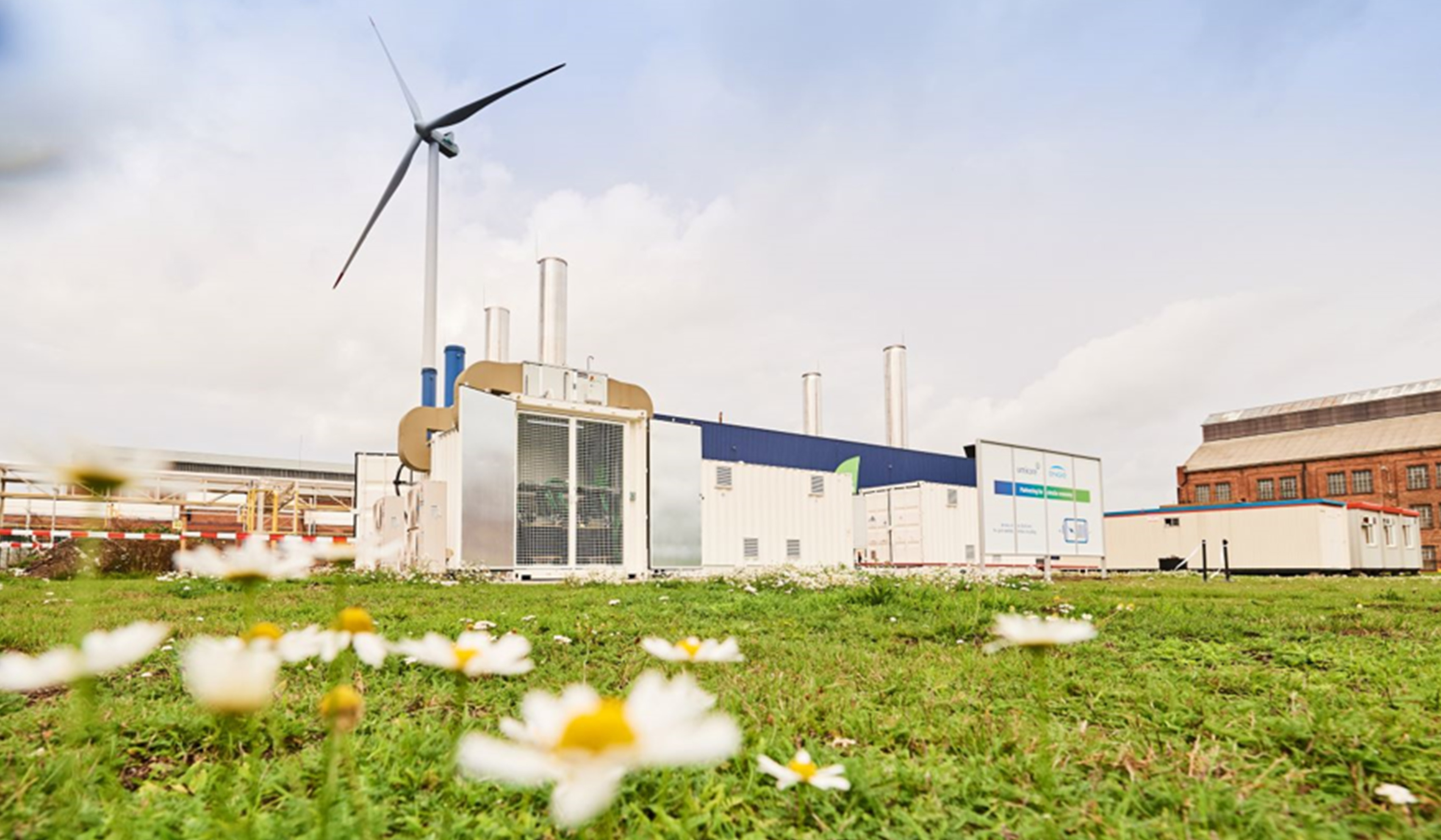Still, the widespread adoption of electric cars will come with new technological and societal challenges. At ENGIE, we are busy searching for solutions that maximize performance, limit waste and help contribute to making the entire energy ecosystem as sustainable as possible.
RE-USE AND RE-POWER : second-life batteries in the energy transition
In partnership with the Belgian materials company Umicore, we have taken aim at a central question for our EV future: What should be done when an electric car dies before its battery?
Launched last October in Olen, Belgium, the breakthrough “Second Life” battery system recycles used Lithium ion batteries (Li-ion batteries) from defunct electric cars, repurposing and redirecting their power capacity into the local electrical grid.
Last month, the project won the Febeliec Energy Award, the prize from the Federation of Belgian industrial energy consumers that recognizes creativity and innovation in the energy field.
Jury president Wouter De Geest was impressed by the ENGIE-Umicore joint project for its anticipation of “the upcoming challenges about the ever growing number of EV and the need to reuse and recycle batteries.” The Project Re-use and Repower was Winner of the ENGIE Innovation Trophies in 2018
Here is a snapshot on the award-winning project Re-Use and Re-power:
What we’ve built. ENGIE and Umicore connected the Li-on batteries from 48 Renault Kangoo’s EVs together inside shipping containers, harnessing their collective energy to form one large storage battery with a capacity of 1.2 MW and a total energy content of 720 kWh. This
Distributed Energy Resources Management Systems project managed by
ENGIE DERMS was inaugurated on October 8th, and counts on the collaboration with two start up’s from ENGIE New ventures’ portfolio:
KIWI Power to provide the distributed energy management software and
Connected Energy to recover EV’s batteries and integrate them into a stationary system. The system unit will serve as a reliable back-up power source in the existing renewable energy grid in Belgium.

How it’s used. As an energy reserve for our Elia high-voltage grid, this “battery park” automatically corrects any issues detected in the main frequencies of its system within 30 seconds. For example, if electricity demand rises, the batteries will turn on. If demand decreases, the batteries will shut off and recharge. This fluctuation allows the system to serve as a stable reserve of energy to ensure the efficient functioning of the electrical grid.
Wider context. ENGIE is the largest green energy producer in Belgium, creating 681 MW of renewable energy in the country, including solar, wind, biomass and hydropower. But key renewable energy sources, like wind and sun, are dependent on natural conditions, and not always able to keep up with consumer demand. It’s a problem that energy operators have long been trying to solve, and the second-life system offers a potential new source reserve energy stability to help smooth the switch to green energy.
Philippe Van Troeye, CEO ENGIE Benelux: “In the future, there will be more and more storage batteries helping to compensate for intermittent renewable energies, allowing greener sources to better integrate into the electrical system.”
Battery efficiency
1) A storage system based on lithium-ion batteries has a loss of about 15% and an efficiency of approximately 85%. That's quite high compared to other ways to save energy (pump 75%, hydrogen 40-60%).
2) Recycled batteries brought to the Umicore site have about ⅔ of their original energy (15-17 kWh). This converts to ten years of potential energy contribution by this kind of second-life battery system.
Business opportunity. ENGIE has been researching innovative methods to produce and store energy with batteries since 2014. Umicore is a world leader in the production and recycling of materials for rechargeable batteries. By joining forces, this project allows:
● Testing of different battery types in an effort to determine which ones are best suited for the job.
● Investigating the best practices for delivering grid support.
● Helping our industrial customers in the transition to zero carbon by providing them the certainty of a renewable power supply.
What’s next. Over the next ten years ENGIE and Umicore's research center, Laborelec, will monitor the performance of the system to better understand the life cycle of the recycled batteries and the best opportunities to plug them into the circular economy.
Thought for the road. Recycling electric car batteries could have meant simply placing them in other electric cars. ENGIE and Umicore instead decided to explore the potential of using them to build a whole new system that could be plugged in to the existing renewable energy grid. The success of our transition to a carbon-free future isn’t just about selling greener products — it’s also about building new, cleaner infrastructure on the power of smart ideas.
